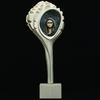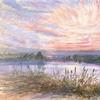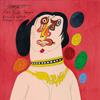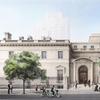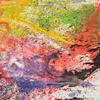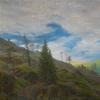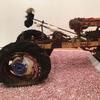University of Illinois Krannert Art Museum exhibition celebrates early images of nature, female artists
- CHAMPAIGN, Illinois
- /
- August 09, 2017

CHAMPAIGN, Ill. — Botanical prints and other portrayals of nature from the Renaissance onward were not only lovely to look at or used to illustrate scientific text. They also contributed to the scientific knowledge of the time by helping scientists identify plants or insects and documenting natural phenomena.
Artists and illustrators worked closely with botanists and entomologists. And because flowers and nature were acceptable artistic subjects for women at the time, female artists flourished and made significant scientific contributions.
An exhibition opening Aug. 31 at Krannert Art Museum, “Coveting Nature: Art, Collecting, and Natural History in Early Modern Europe,” celebrates images of nature, with an emphasis on female artists. The majority of artwork on display comes from the collections at Krannert Art Museum and the Rare Book and Manuscript Library. The opening night reception will take place at 6 p.m. Aug. 31.
The centerpiece of the exhibition was recently acquired by Krannert Art Museum – a painting from the 1690s by Dutch painter Anna Ruysch. Maureen Warren, the museum’s curator of European and American art, said Ruysch’s painting is typical of the late 17th century in showing a single vase with an arrangement of spring and summer flowers – tulips, a rose, a snowbell, cornflowers, morning glories, a poppy and anemones.
Ruysch would have painted the flowers from both real life examples (her father was a botanist) and from drawings, prints and paintings, since they were not all in season at the same time, Warren said. It was up to the artist to assemble the flowers imaginatively in a painting that conveys a consistent light source and shadows, she said, as well as an illusion of depth and three-dimensionality.
The painting also includes two butterflies, a ladybug and a garden snail. They are painted with such accuracy that one of the butterflies can be identified not only by species, but also by gender, Warren said.
The exhibition also includes prints made by contemporary women printmakers and engravers in honor of Maria Sibylla Merian, an early printmaker who specialized in images of insects and who made many scientific discoveries. She is particularly known for her study of the metamorphosis of caterpillars into butterflies. She raised caterpillars and documented their transformation.
“She was an exceptional artist, but also a truly gifted scientist,” Warren said.
Among the artists invited to participate in the portfolio honoring Merian is Emmy Lingscheit, a printmaker and U. of I. art professor. Lingscheit’s work, “Harvesters,” shows a field of corn with locusts flying toward it and swarming the plants – a metaphor for unchecked human consumption and its consequences on the environment, with the locusts moving across the land and using it up.
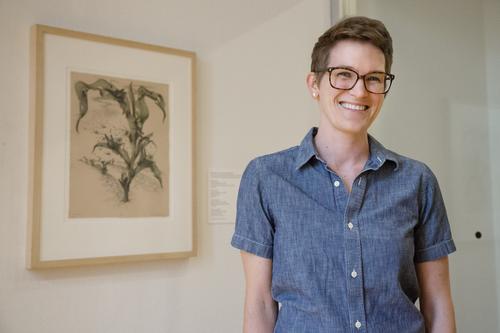
“In working with this portfolio theme, I wanted to respond to the agricultural landscape of Illinois, its uses and vulnerabilities. This monolithic crop is being consumed by a natural phenomenon we can’t predict or control,” Lingscheit said. “It’s terrifying, but also awe-inspiring.”
Glass artist and U. of I. alumna Flora Mace and her collaborator, Joey Kirkpatrick, have a glass sculpture in the exhibition, Fritillaria: Checkered Lily. The artwork is one of a series of botanical sculptures they created by drying plants and encasing them in a composite material surrounded by glass.
Mace has been experimenting with making 3-D portraits of plants for years. Through trial and error, she learned how to dry the plants and encase them in the composite material without destroying them.
“I can’t just pop the plant out of the ground and put it in sand to dry,” she said. “I have to take everything apart. Many times I have to take all the petals off a flower or all the leaves off a certain segment. I have to do experiments on each plant. If it doesn’t work, I have to wait a year” for the plant to bloom again.
She thinks of her work as portraiture. She uses several plants to get the ideal look for the species, because the leaves are at their brightest at a different time than the flowers are in full bloom. She slides wires into the stems to hold them in the 3-D shape she wants. Once the plant is dried and put back together, she glazes the plant with the composite to protect it from the heat that is created when adding the composite materials and glass to build the sculpture around it.
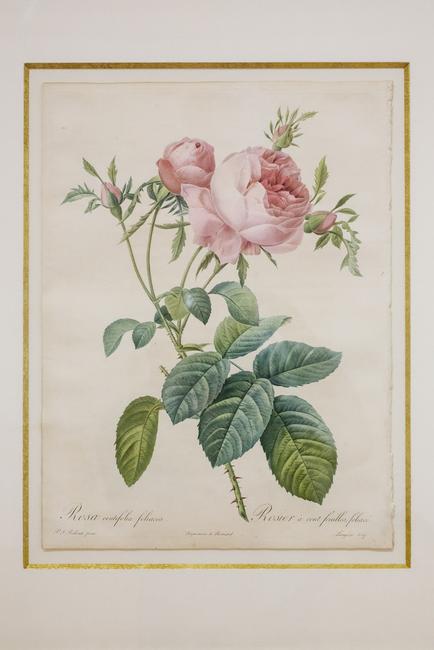
Mace works with the wildflowers that grow on her farm on the Olympic Peninsula in Washington, but the flower sculpture that will be in the Krannert Art Museum exhibition is a checkered lily that came from the yard of glass artist Dale Chihuly, a friend of Mace and Kirkpatrick.
Scientists are interested in her work because they can examine the flower for more than the short time it is blooming. They’d like to compare them with plants over time to see how a species changes, Mace said.
Among the items in the exhibition from the collection of the Rare Book and Manuscript Library are examples of florilegium, or books with images of flowers that were used as models for drawing or embroidery.
Warren said some of the artwork will be rotated halfway through the exhibition, with all the color prints being replaced by a new set of prints and the pages of the books turned to display a new page. The rotation protects the color images from damage by light, she said.
“This also allows us to share more artwork with visitors over the course of the exhibition, which is terrific,” Warren said.
Contact:
Julia Nucci KellyKrannert Art Museum
jkell@illinois.edu



